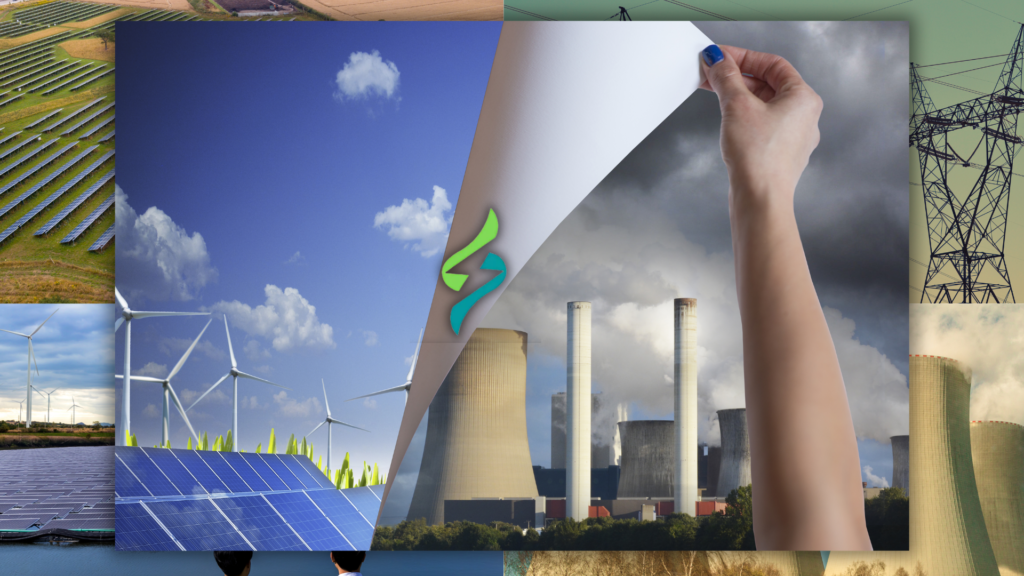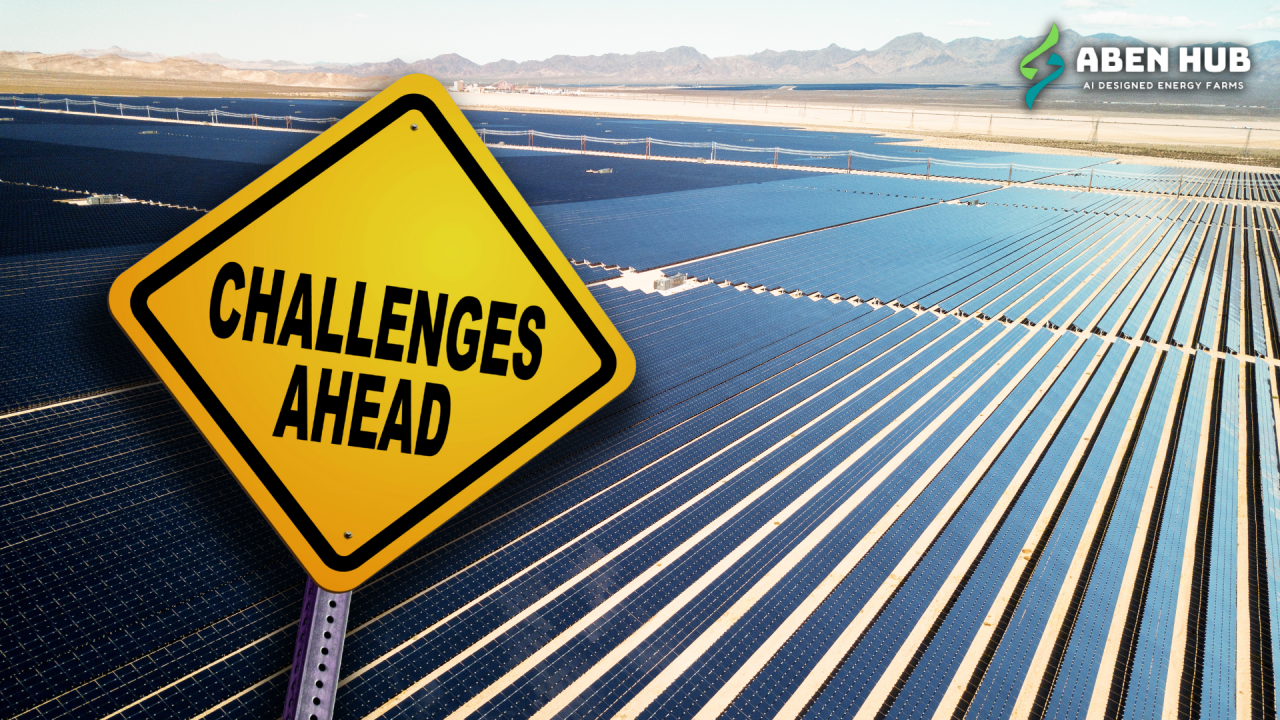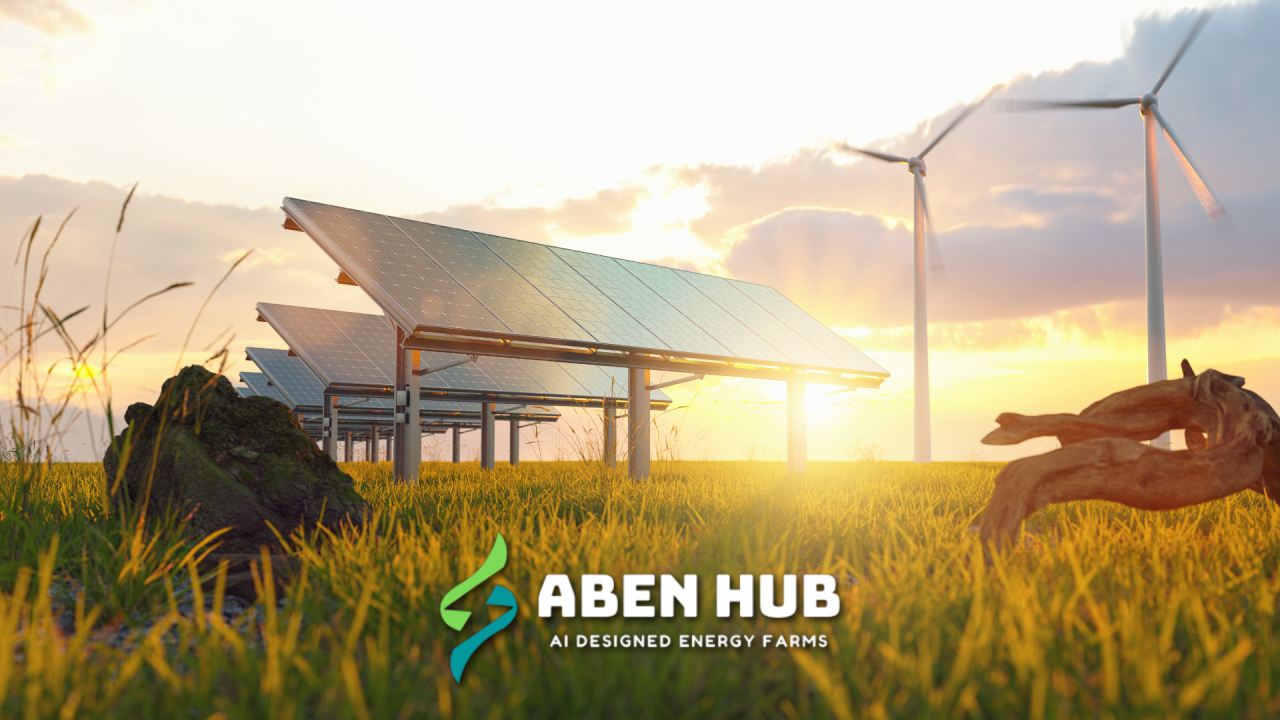The International Energy Agency (IEA) ’s 2024 forecast offers a bold vision for renewable energy. By 2030, global renewable capacity is expected to grow 2.7 times, reshaping the energy landscape and driving the transition toward sustainability. Solar PV and wind power are at the forefront of this movement, dominating new capacity additions due to favorable policies, technological advancements, and declining costs.
While the opportunities are immense, this growth also presents challenges. Utility-scale projects must address issues like grid integration, permitting bottlenecks, and the rising complexity of project design. ABEN HUB is stepping in to provide innovative solutions with its AI-powered design platform, uniquely tailored for utility-scale renewable energy projects.

Renewable Energy: The Growth Story
The IEA predicts a record-breaking addition of 5,500 GW of renewable energy capacity by 2030, signaling a 70% increase in annual installations compared to previous records. This growth is largely driven by:
Solar PV Dominance: Solar PV alone is expected to account for over half of the new capacity, surpassing hydropower and wind to become the world’s largest renewable energy source.
Geographic Leadership: Key markets like China, the U.S., the European Union, and India are driving this expansion. Notably, China alone will contribute 60% of the global increase, highlighting its leadership in renewable energy investments.
Emerging Markets: Countries in Africa, Southeast Asia, and Latin America are also gaining momentum. Despite challenges like financing and infrastructure gaps, these regions present untapped potential for significant renewable capacity.
This trajectory underscores the global commitment to sustainability and the pivotal role renewables play in achieving net-zero emissions targets.
Key Challenges in Meeting Ambitious Targets
While the outlook is promising, achieving these ambitious goals requires addressing several challenges:
1. Grid Integration
As wind and solar are set to contribute 30% of global electricity generation by 2030, grid infrastructure must evolve to handle increased variability. Curtailment rates (where energy cannot be utilized due to grid constraints) already range between 5-15% in countries like the UK and Chile. Without strategic planning, these rates could rise, affecting project profitability and efficiency.
ABEN HUB’s Solution: ABEN HUB’s design platform optimizes layouts for seamless grid integration. By factoring in transmission capacities, demand patterns, and grid stability requirements, our platform reduces curtailment risks and maximizes energy delivery.
2. Policy and Permitting Bottlenecks
In many regions, slow permitting processes and weak infrastructure create significant delays. For instance, interconnection queues can stretch for years, jeopardizing project timelines and escalating costs.
ABEN HUB’s Solution: Our platform aims at accelerating early-stage planning by investigaitng the automation of regulatory compliance considerations, enabling developers to identify potential bottlenecks and address them proactively.
3. Cost Pressures and Supply Chain Constraints
While renewable energy remains cost-competitive, supply chain disruptions—exacerbated by the lingering effects of COVID-19—have temporarily increased costs. Solar PV’s Levelized Cost of Electricity (LCOE) rose from $36/MWh in 2021 to $60/MWh in 2023.
ABEN HUB’s Solution: By automating complex design calculations, ABEN HUB significantly reduces upfront costs. Our platform’s efficiency ensures developers save on both manpower and timelines, offsetting rising material costs.
4. Technology Selection
Choosing the right technology for specific sites remains a challenge. Different geographies demand different approaches, and suboptimal choices can lead to inefficiencies.
ABEN HUB’s Solution: Our proprietary database integrates meteorological data, equipment specifications, and modeling parameters. This allows developers to make data-driven decisions and select the most effective technologies for their sites.

Solar and Wind: The Future of Energy
Solar and wind are the cornerstones of the renewable energy transition:
Solar’s Rapid Expansion:
Solar has grown at an average annual rate of 33% over the past decade.
Utility-scale solar projects are the primary drivers, accounting for 77% of new installations in 2023.
By 2040, solar is expected to have the largest share of electricity generation capacity globally.
Wind Energy’s Role:
Wind energy, the second-fastest-growing renewable technology, is projected to grow at 16% annually through 2030.
Offshore wind installations are expanding rapidly, offering higher capacity factors and reduced land use conflicts.
ABEN HUB’s Role: Our AI-powered design platform is equally effective for solar and wind projects, offering tailored solutions to optimize layouts, minimize environmental impact, and maximize energy production.
The Economic Case for Renewables
The economic advantages of renewable energy are driving global adoption:
Declining Costs: Over the last decade, the cost of installing solar PV has plummeted by 60%, making it one of the most affordable energy sources.
Competitiveness: Utility-scale solar prices range from $16/MWh to $35/MWh, outperforming traditional fossil fuel generation.
Policy Support: Favorable tax credits, subsidies, and net metering policies continue to boost adoption.
ABEN HUB’s Advantage: By reducing project timelines and design costs, our platform further enhances the economic appeal of utility-scale renewables, making projects more viable and attractive for investors.
Supporting a Holistic Energy Infrastructure
Renewable energy growth isn’t limited to isolated projects—it’s about building a sustainable infrastructure that integrates residential, commercial, and utility-scale efforts. While residential installations reached 6.8 GWdc in 2023, utility-scale projects dominate, holding a 45.5% market share in the global solar farm market.
ABEN HUB’s Contribution: Our platform bridges the gap between ambitious targets and practical implementation, ensuring utility-scale projects deliver maximum impact within a holistic energy ecosystem.

A Network of Support for Innovation
ABEN HUB is backed by an ecosystem of prestigious institutions, including the University of Waterloo Faculty of Engineering, Concordia University, and innovation hubs like V1 Studio and District 3 Innovation . This support has been instrumental in refining our platform over two years, ensuring its accuracy, reliability, and scalability.
Our partnerships bring together engineers, researchers, and business experts who share our commitment to advancing renewable energy solutions. Their expertise enables us to remain at the forefront of innovation while meeting the industry’s evolving needs.
Why ABEN HUB Stands Out?
What sets ABEN HUB apart is our unique combination of advanced technology and user-centric design:
Speed: Millions of calculations are performed in seconds, delivering optimized layouts in minutes.
Ease of Use: Minimal input is required from users, making the platform accessible to both experts and newcomers.
Global Applicability: Our database supports site-specific solutions for projects anywhere in the world.
Sustainability Focus: Our designs prioritize environmental preservation alongside energy optimization.

Looking Ahead: The Path to 2030
The International Energy Agency (IEA) forecasts that by 2030, renewables will account for nearly half of global electricity generation, with solar PV leading the charge. While uncertainties around policy and supply chains remain, the potential for growth is undeniable.
ABEN HUB is poised to play a pivotal role in this transition. Our AI-powered platform aligns with global trends, empowering developers to overcome challenges and achieve ambitious targets. By delivering precision, efficiency, and cost savings, we’re helping drive the renewable energy revolution.





